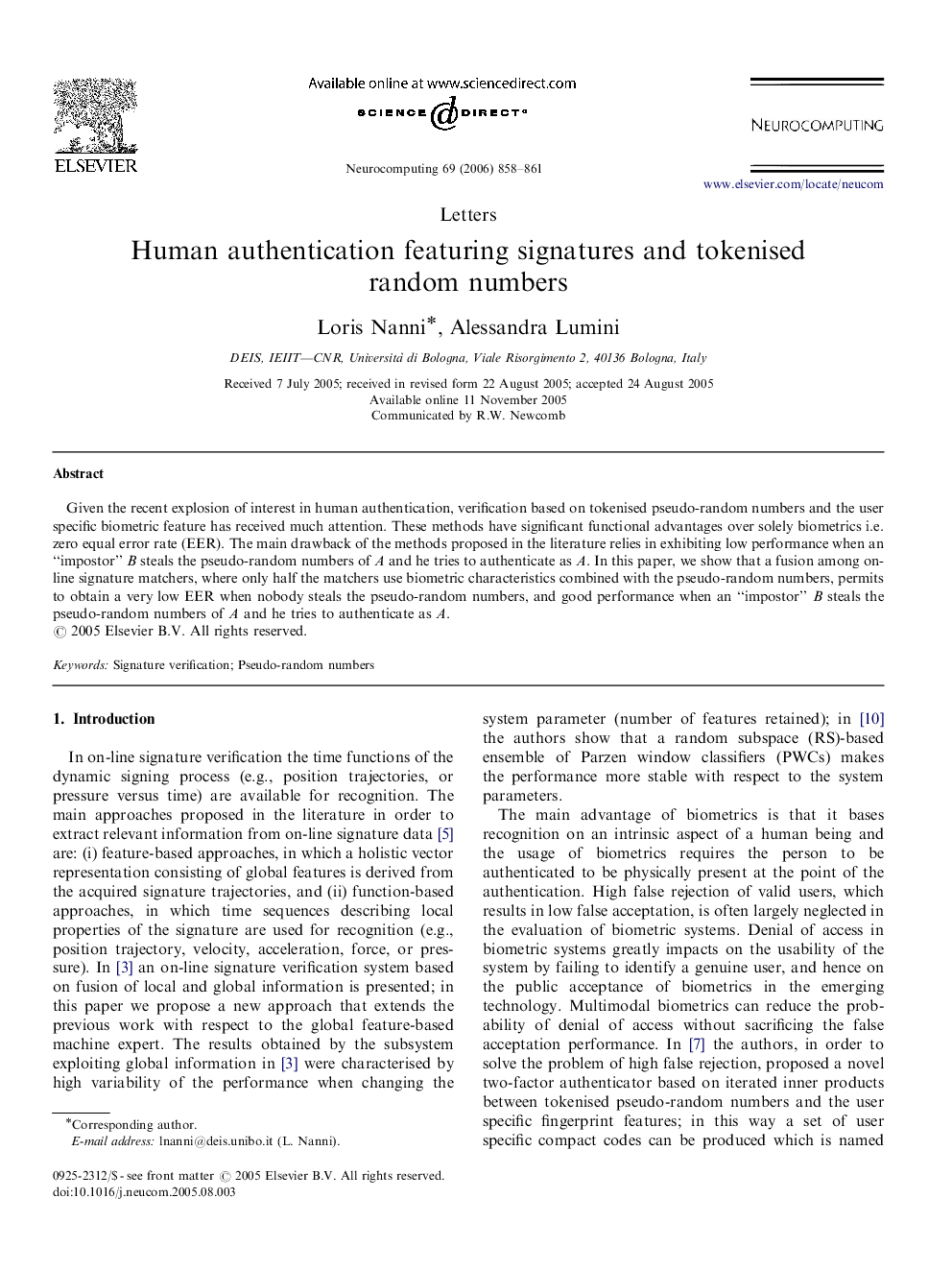| Article ID | Journal | Published Year | Pages | File Type |
|---|---|---|---|---|
| 409551 | Neurocomputing | 2006 | 4 Pages |
Given the recent explosion of interest in human authentication, verification based on tokenised pseudo-random numbers and the user specific biometric feature has received much attention. These methods have significant functional advantages over solely biometrics i.e. zero equal error rate (EER). The main drawback of the methods proposed in the literature relies in exhibiting low performance when an “impostor” B steals the pseudo-random numbers of A and he tries to authenticate as A. In this paper, we show that a fusion among on-line signature matchers, where only half the matchers use biometric characteristics combined with the pseudo-random numbers, permits to obtain a very low EER when nobody steals the pseudo-random numbers, and good performance when an “impostor” B steals the pseudo-random numbers of A and he tries to authenticate as A.
